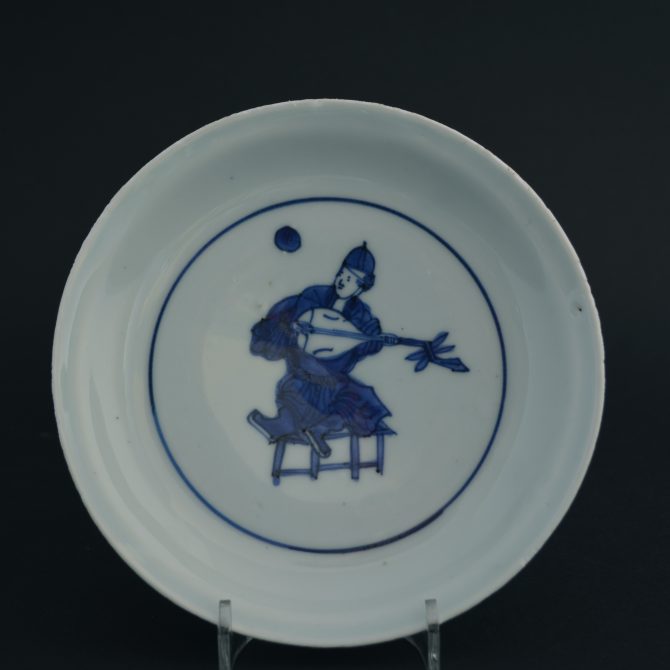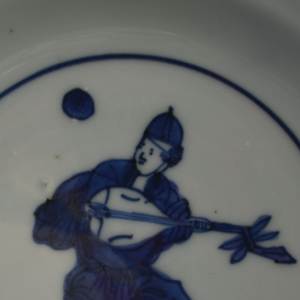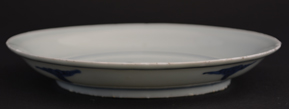
TIANQI 1621 – 1627 Transitional Porcelain
A Late Ming Porcelain Dish Made for the Japanese Market, Tianqi Period 1621-1627. Decorated in Blue and White with a Scholar Seated on a Stool Playing a Pipa (a Four Stringed Lute). The Base with a Four-Character Seal Mark Fu Gui Jieqi(High Quality Vessel for the Rich and Honourable).
SOLD
- Condition
- Very good, one glaze chip to the front rim, the rim has minor Mushikui (insect-nibbled) fritting.
- Size
- Diameter : 15 cm (6 inches)
- Provenance
- N/A
- Stock number
- 24231
- References
- For a Tianqi porcelain dish of this pattern see : The Peony Pavilion Collection : Chinese Tea Ceramics for Japan (c.1580-1650). Christie`s London 12th June 1989 lot 301. For another Tianqi porcelain dish of this design see : A Celebrated Oriental Collection, Christie`s London, November 27, 1967, lot 45. A Ming dish of this design is in our `Sold Items` number 22378.
Information
Ming Porcelain for Japan :
During the late Ming Period the Chinese made a large among of porcelain for the Japanese market, it was made from the Wanli period (1573-1620) and ended in the Chongzhen period (1628-1644), the main period of production being the 1620`2 and 1630`s. The porcelain objects produced were made especially for the Japanese market, both the shapes and the designs were tailored to Japanese taste, the production process too allowed for Japanese aesthetics to be included in the finished object. Its seams firing faults were added, repaired tears in the leather-hard body were too frequent to not, in some cases, be deliberate. These imperfections as well as the fritting Mushikui (insect-nibbled) rims and kiln grit on the footrims all added to the Japanese aesthetic. The shapes created were often expressly made for the Japanese tea ceremony meal, the Kaiseki, small dishes for serving food at the tea ceremony are the most commonly encountered form. Designs, presumably taken from Japanese drawings sent to China, are very varied, often using large amount of the white porcelain contrasting well with the asymmetry of the design.



